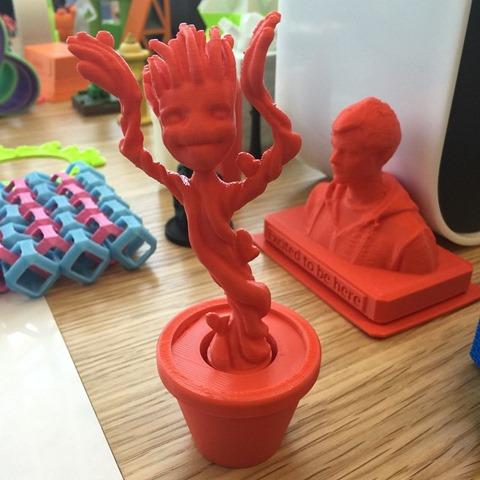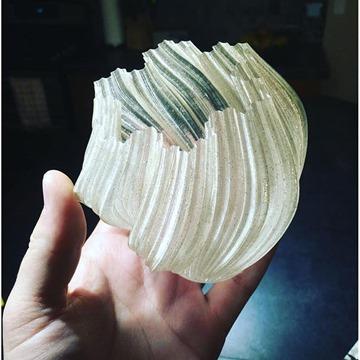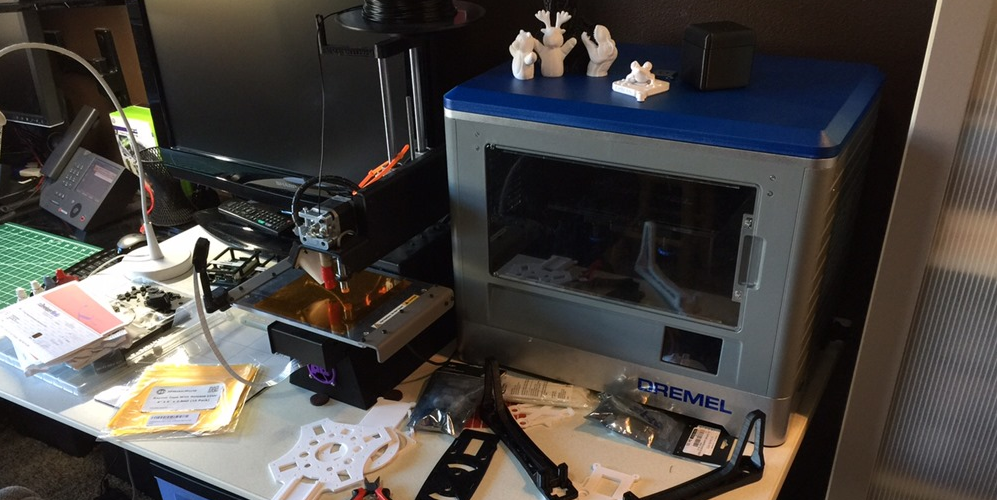It is often appropriate, after the holiday season has wrapped up, to examine all of the stuff with which our lives are filled and try to discover some way to make it less of a burden. For makers, this is an even more pressing activity because in addition to the influx of objects presented to us, we are continually creating our own. The very process of creating is so enjoyable that it is sometimes difficult to disengage from it even when there isn’t anything else that we could possibly need to make. Luckily, there are many things that we can do when we are hit with (or simply living with the continual pressure of) the drive to make that don’t just involve the production of meaningless plastic forms.
 Scott Hanselman, programmer, teacher, and speaker who works as a member of the Web Platform Team at Microsoft, also blogs about technology and recently wrote an essay to address the proliferation of nonsense that can be, but doesn’t have to be, the output of so many 3D printing projects. This isn’t written as an insider snob’s efforts to discourage people from engaging in introductory 3D printing projects, but rather as a voice to guide those who are ready to move from the initial excitement into a sustainable relationship with making. This is an important transition, because it is the moment when many give up on 3D printing as being frivolous…and possibly only something that the rich could afford to waste money with.
Scott Hanselman, programmer, teacher, and speaker who works as a member of the Web Platform Team at Microsoft, also blogs about technology and recently wrote an essay to address the proliferation of nonsense that can be, but doesn’t have to be, the output of so many 3D printing projects. This isn’t written as an insider snob’s efforts to discourage people from engaging in introductory 3D printing projects, but rather as a voice to guide those who are ready to move from the initial excitement into a sustainable relationship with making. This is an important transition, because it is the moment when many give up on 3D printing as being frivolous…and possibly only something that the rich could afford to waste money with.
Hanselman shares the voice of reason:
“When you first start learning about 3D printing, you’ll usually find yourself looking at a bunch of brightly colored plastic busts. The first 3D printed thing I ever saw was a fluorescent green Yoda head. First, you’re like ‘HOW DID YOU DO THIS?’ but quickly, you’re more like ‘OK, how many brightly colored plastic pieces of crap do I really need in my life?’ At this point, you’ve likely dismissed 3D printing as the world of the rich, the insane, or the nerdy, or all three. This is where I was.”
In his blog post, “3D Printing is for so much more than just making brightly colored plastic pieces of crap,” he then goes through three important lessons that may not seem profound at first, but because of their ‘blinding flash of the obvious’ nature are actually among the most important things you might have missed learning. The first is that there are a world of projects that require 3D printing upgrades to your 3D printer. These may not be products that are useful externally, but they greatly improve both the experience of using the 3D printer and indirectly contribute to its expanded possibilities.
 Lesson number two is to take time and consider the use of exotic filaments. For starters, he recommends that you check out Proto-pasta. This small company, which started with a Kickstarter campaign a couple of years ago, sells filaments with fantastic additions that take products from solid to showmanship…even if it’s just a bust of Yoda. Materials from Proto-pasta are among those we cover regularly, as they offer an incredible amount of variety and opportunity.
Lesson number two is to take time and consider the use of exotic filaments. For starters, he recommends that you check out Proto-pasta. This small company, which started with a Kickstarter campaign a couple of years ago, sells filaments with fantastic additions that take products from solid to showmanship…even if it’s just a bust of Yoda. Materials from Proto-pasta are among those we cover regularly, as they offer an incredible amount of variety and opportunity.
The final insider lesson that Hanselman shares is that it should be remembered that the 3D printer doesn’t have to spit out complete pieces. Instead, it can be used to create components that can be assembled to create things larger and more complex than you might otherwise be able to create. Often this is where the truly useful (read: practical) application of 3D printing comes in to play.
While these ideas may seem obvious in retrospect, it is exactly that which means they are solid contributions to a 3D printing maker’s development. After all, it took us 5,000 years to put wheels on a suitcase, but once we did it nobody could really understand why we hadn’t thought of it earlier.
Even if these three ideas are ones you’ve been kicking around yourself, Hanselman’s blog is well worth checking out. He’s an interesting guy and that makes for interesting writing. Now…get back to making. Discuss this story in our forum.
Subscribe to Our Email Newsletter
Stay up-to-date on all the latest news from the 3D printing industry and receive information and offers from third party vendors.
You May Also Like
IperionX Inks 10-Year Deal with Wisconsin Manufacturer for 80 Metric Tons of Titanium Per Year
IperionX, the Charlotte-based supplier of sustainable titanium powders used for additive manufacturing (AM) and metal injection molding (MIM), has signed a ten-year deal with United Stars, a group of industrial...
Gastronology Launches Industrial Production of 3D Printed Food for Dysphagia Patients
Food 3D printing has, in many ways, been an additive manufacturing (AM) segment looking for the right business case. While some applications are beautiful and others may or may not...
Lockheed Martin Leads $3M Investment in Q5D’s Electronics 3D Printing System
Q5D, an original equipment manufacturer (OEM) of robotic arm, hybrid additive manufacturing (AM) systems used for wire harness production, has closed a $3 million investment round. The investment arm of...
3D Printing News Briefs, April 6, 2024: Depowdering, Cybertruck Door Handles, & More
In today’s 3D Printing News Briefs, ioTech’s digital manufacturing CLAD technology is opening up opportunities for microelectronics and additive manufacturing. Hexagon and Raytheon Technologies commercially released the Simufact Additive Process...
































